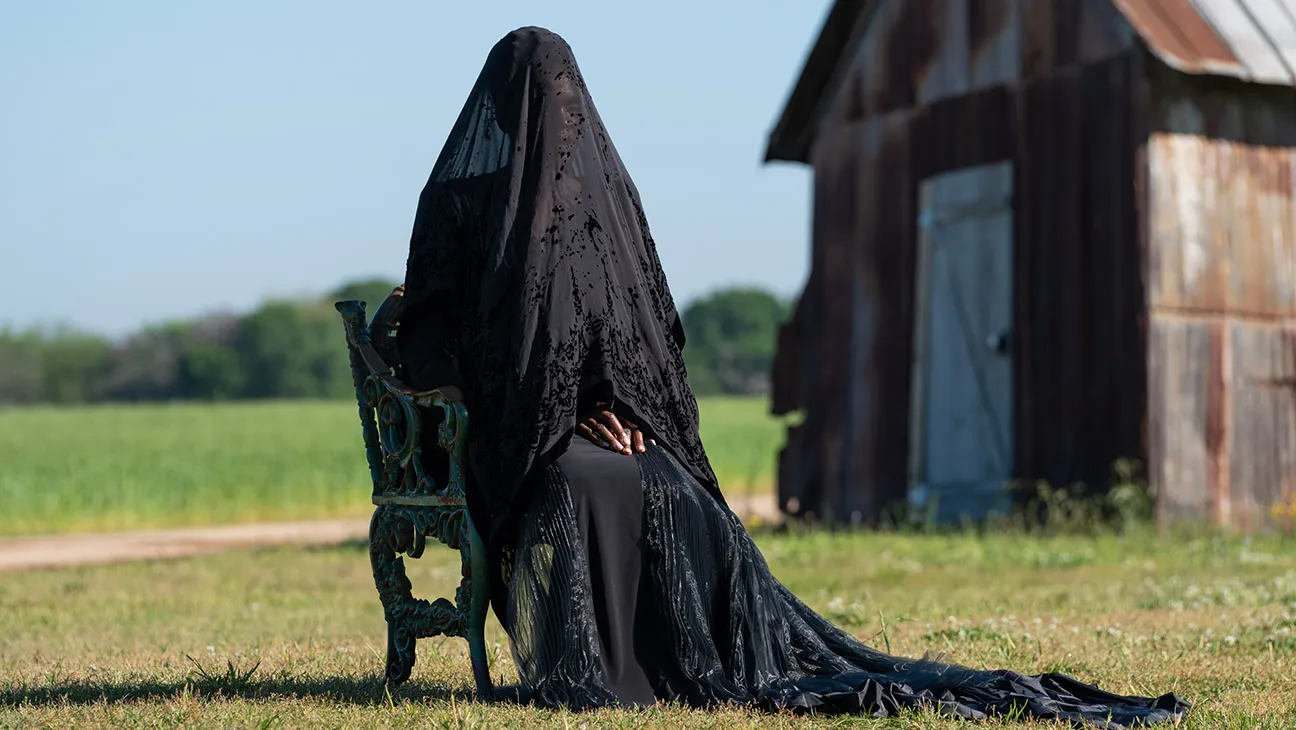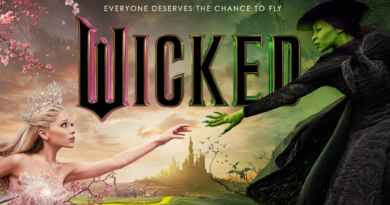
The Woman in the Yard
Filmed at Athena Studios based in Athens, “The Woman in the Yard,” is a Blumhouse production taking a psychological approach to the classic horror genre, relying on suspense, mental states and the characters’ overall struggles.
Set up in a rural fixer-upper farmhouse, the story follows a mother with two children grappling with her emotional and financial state after suffering the loss of her husband in a car crash. At the beginning of the movie Ramona (Danielle Deadwyler) reminisces over a video of her husband. Her son Taylor (Peyton Jackson) interrupts her, stating that the power is off and that she needs to call the power company. Ramona struggles with lethargy and her injured legs, which she needs crutches for. When she gets out of bed she says “give me strength.”
Suddenly the kids see a mysterious woman (Okwui Okpokwasilii) seated in the yard, dressed in all black with a veil covering her face. The black veil symbolizes Ramona’s inability to recognize herself. Ramona confronts the woman, and in the midst of the conversation the woman says “You called, I came.” Ramona called the woman not to give her strength, but to relieve her of her burdens.
Tensions rise inside the home as the woman outside seemingly gets closer to the house. With the family dog missing, and their chickens meeting a gruesome death, Taylor is fed up. He wants to confront the woman or at least drive to the neighbor’s house, but the car won’t start. The woman then starts cursing the house with her supernatural presence.
The uncanny use of shadows in the movie helps drive the mystery behind what is happening. Upset by his mother’s inaction, Taylor finally takes matters into his own hands. Ramona falls asleep during what seems to be a dream or hallucination where she is consoling her daughter, Annie (Estella Kahiha). In a reflection from a mirror she is seen stabbing her daughter in the back. After Ramona wakes up from her hallucination, the movie begins to rely more on jumpscares rather than plot development, which is a key flaw. It makes the movie lack impact and makes the audience disinterested.
The movie’s climax leaves the viewer confused. The woman in the yard begins to invade the house with her supernatural powers. Ramona, Tyler and Annie have to evacuate the light, moving into complete darkness in the attic. Here, the movie loses the audience, and what is seen on the screen is almost indescribable. The woman in the yard is seen taking Annie, yet Tyler sees Ramona in the shadows. Ramona is seen becoming the woman in the yard, making the whole story convoluted.
Ultimately Ramona strikes a bargain with the woman in the yard to free her children, letting them go. Tyler and Annie take off for the neighbor’s farm miles down the road. Ramona stays back alone with the woman, or is she simply by herself? Ramona has to make a decision on whether or not she wants to live. The viewer is left wondering about her final decision.
Somehow at the end of the movie, Tyler, Annie, Charlie and the family dog all show up. No neighbor, no explanation and no police. It seems like nothing ever happened. The power to the house comes back on, and the viewer is left to guess that the utility company got the power restored.
The final scene of the movie shows a painting by Ramona with a backwards “R,” of which the significance is unclear. It could symbolize overcoming something or represent how everything is flipped. The ending is left up for interpretation.
This very well could be the worst Blumhouse movie ever produced, lacking character development. Collet-Serra, the director, missed the mark of a thrilling horror movie and instead delivered a stagnant plot, cheap jumpscares and confusion.
The movie cleverly uses plot holes to make the meaning of the movie more understandable. Similar to deterioration of the mind, people may eventually believe whatever version they choose to see. However, since the movie doesn’t have a definite ending, the interpretation is up to each individual.




